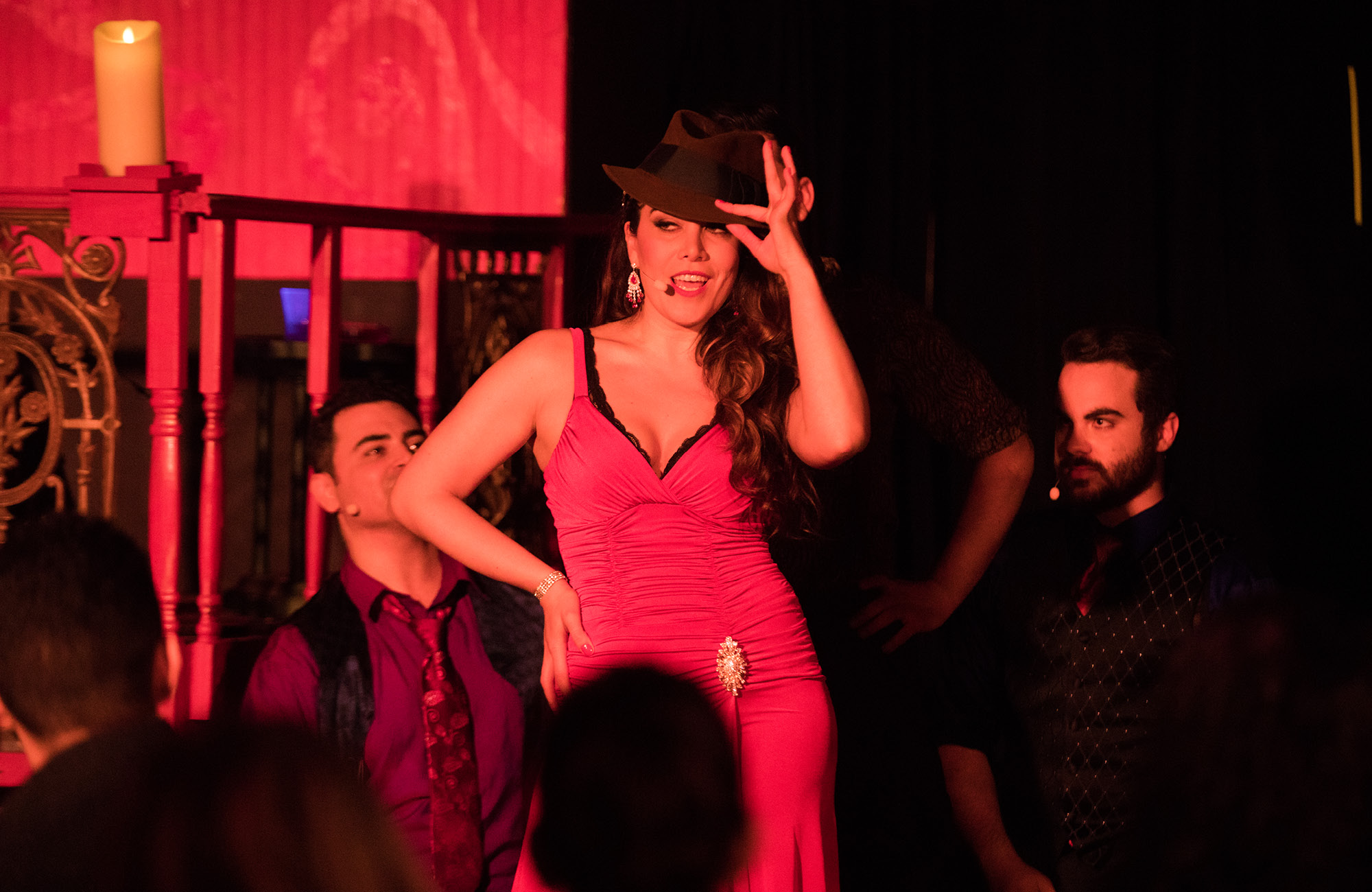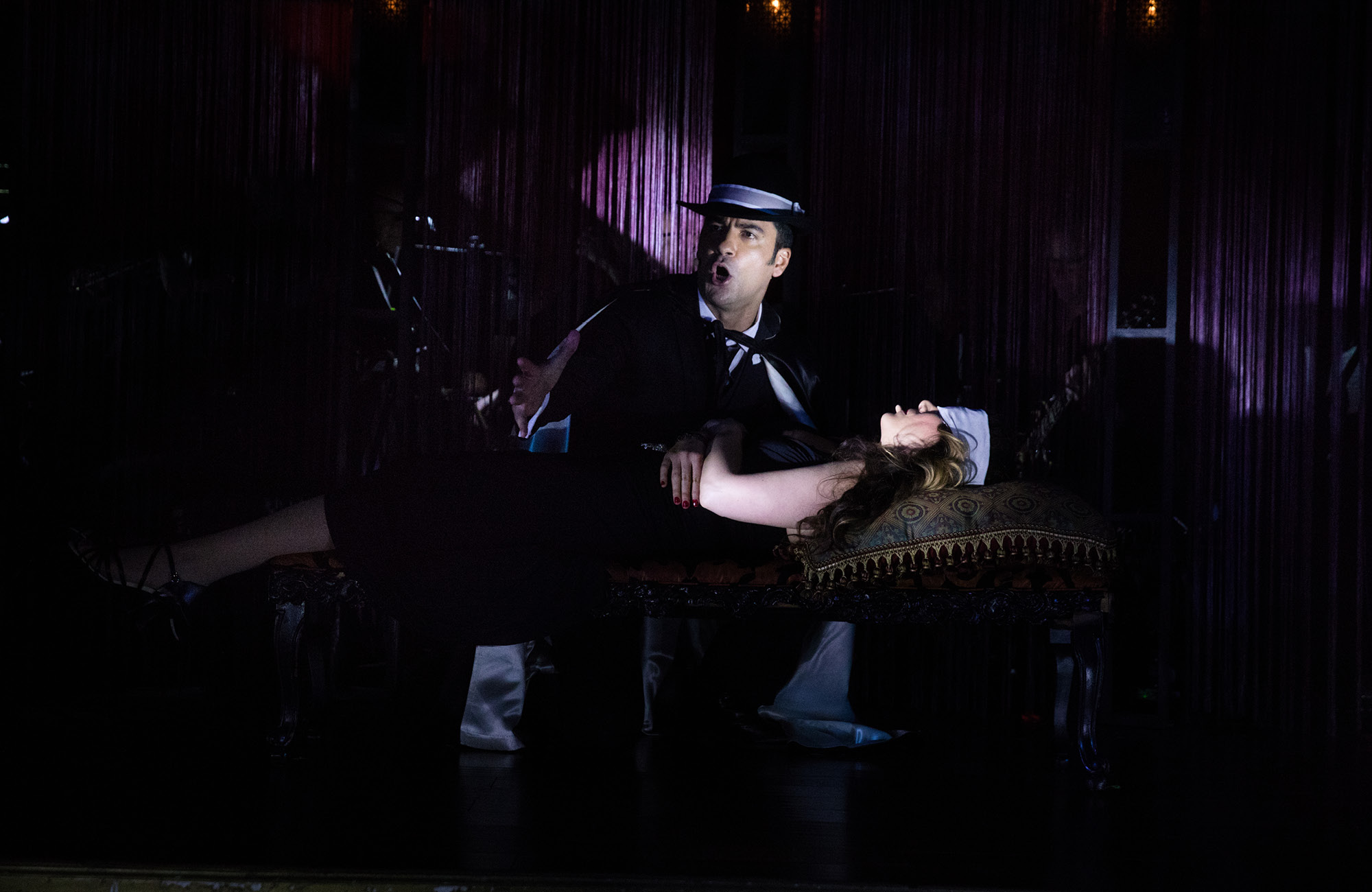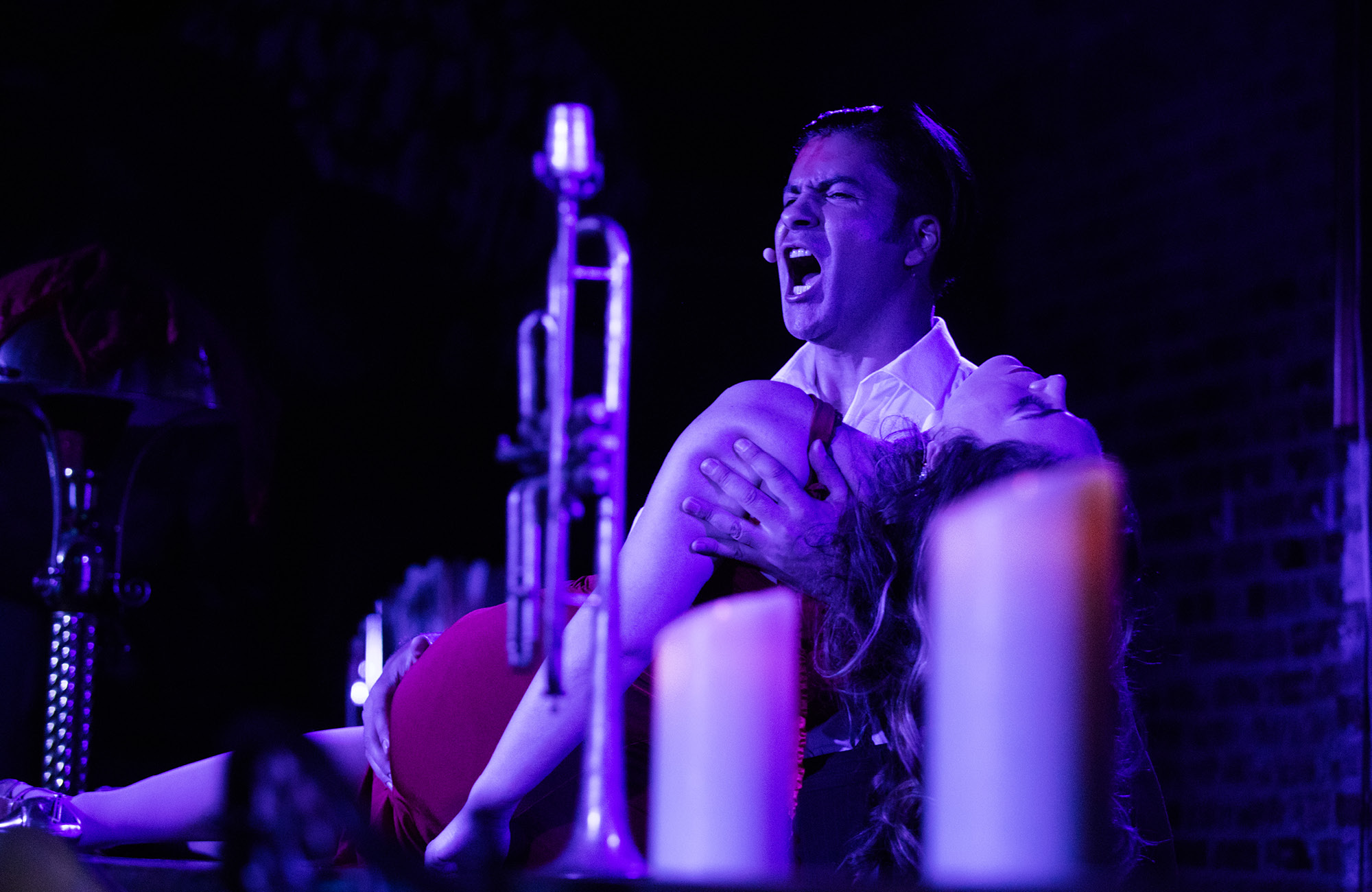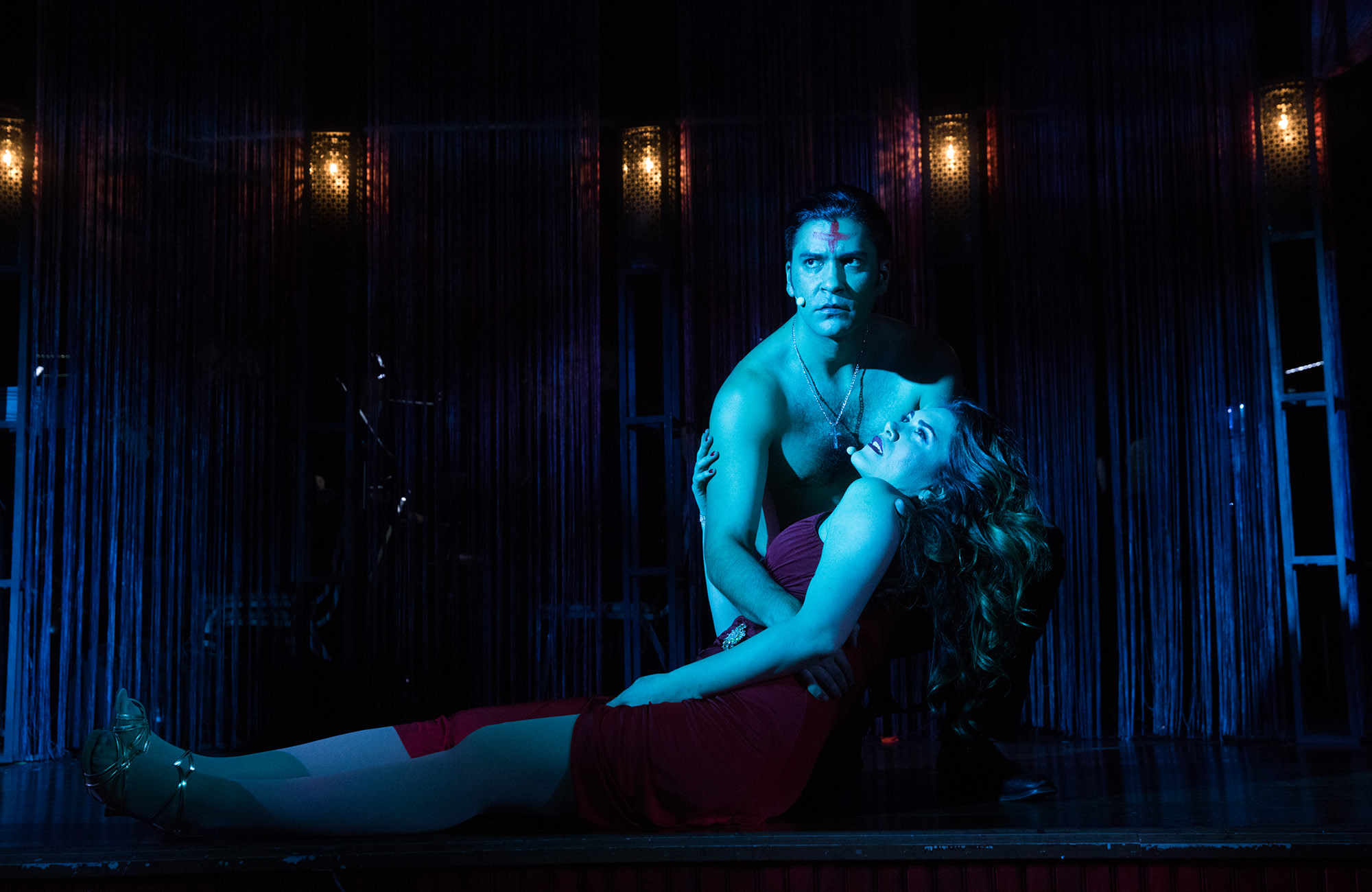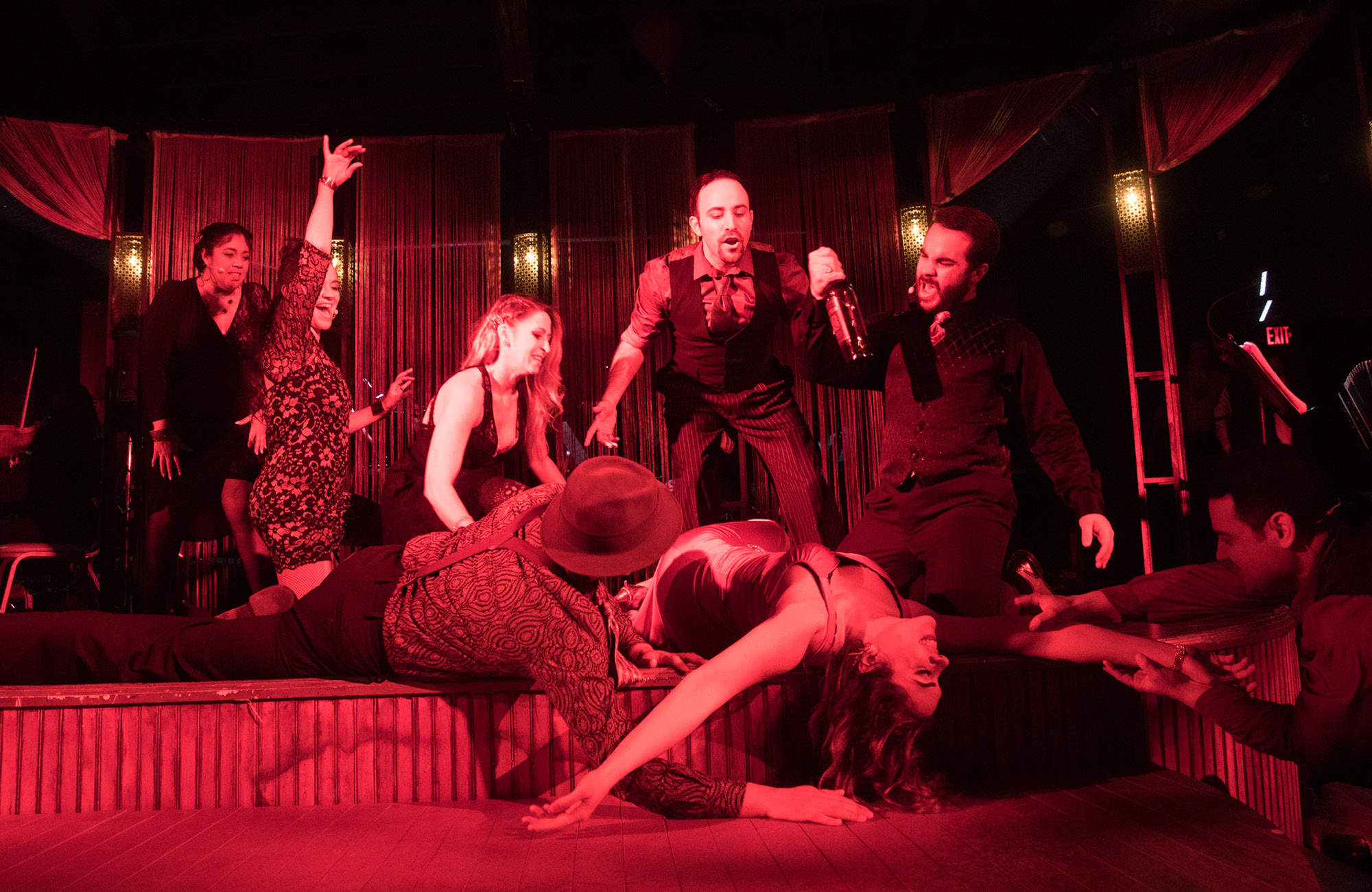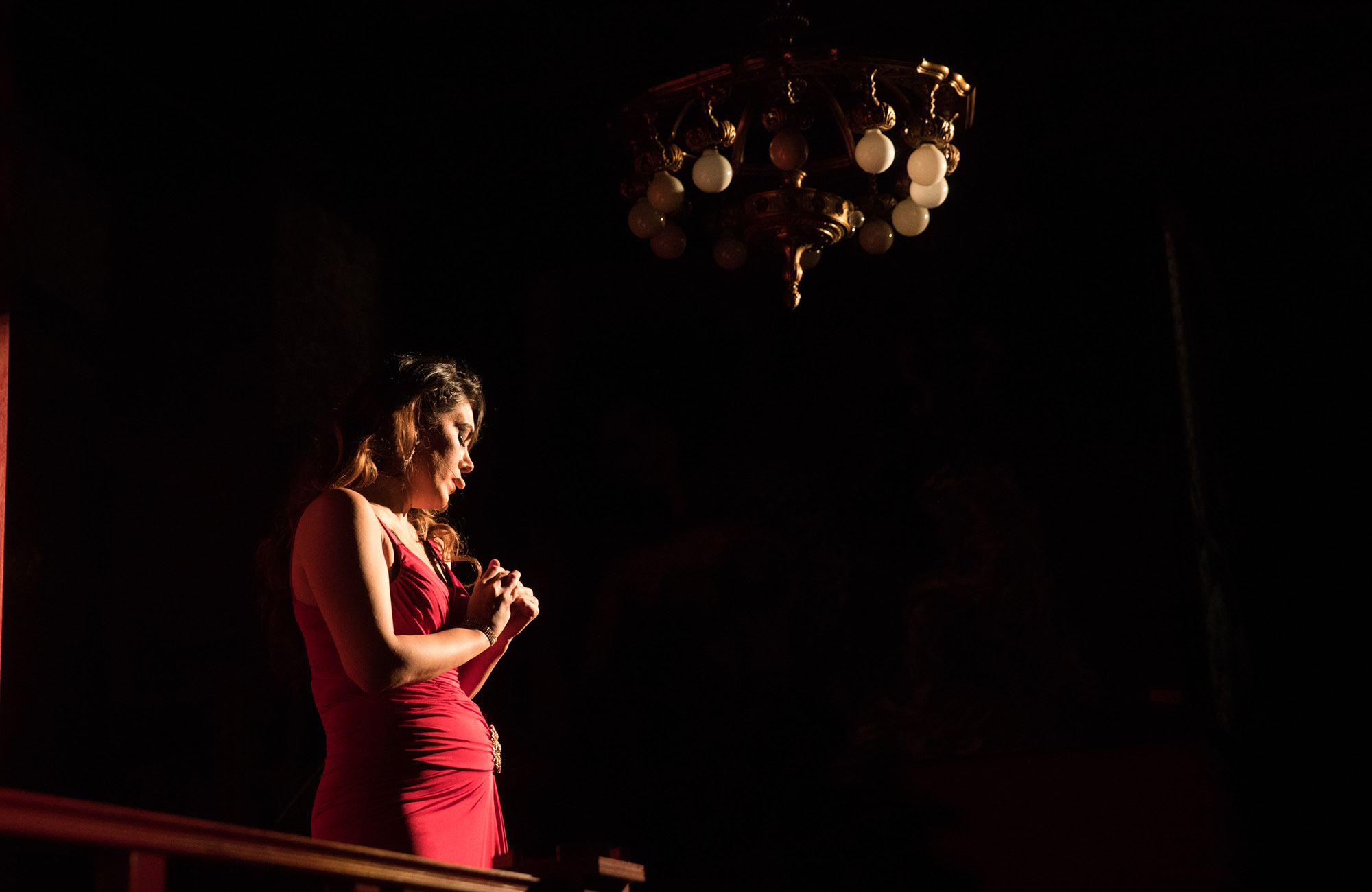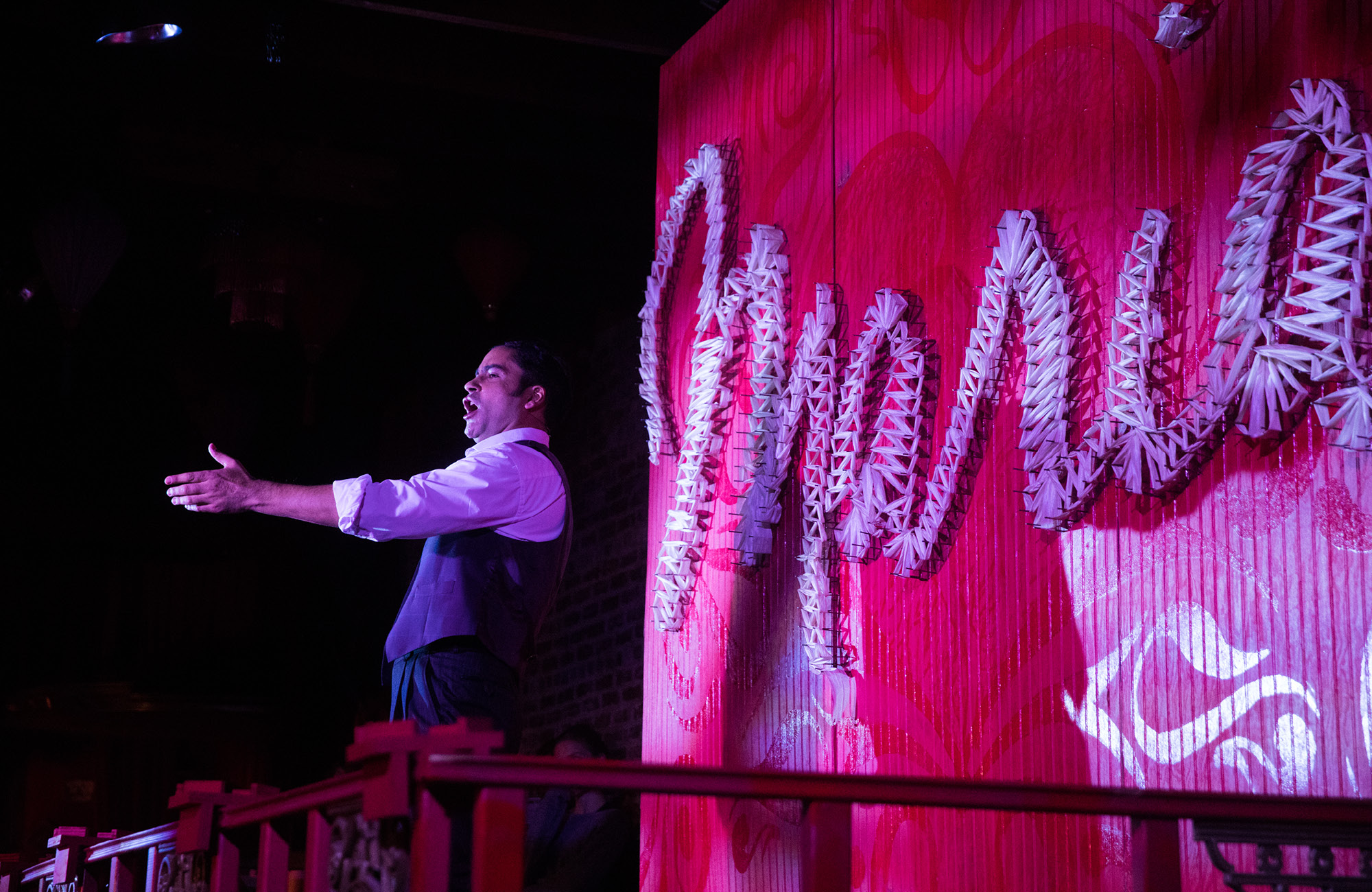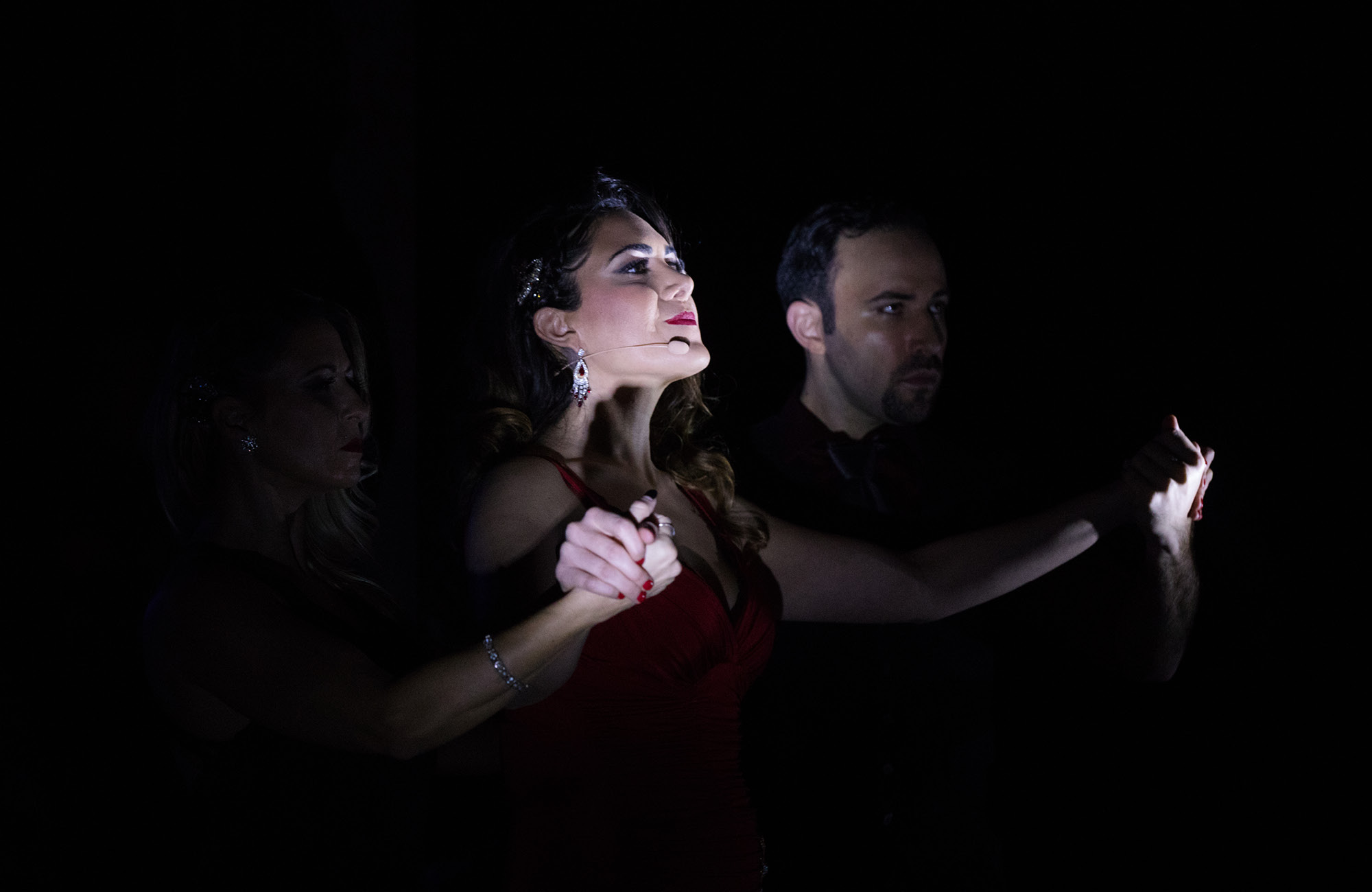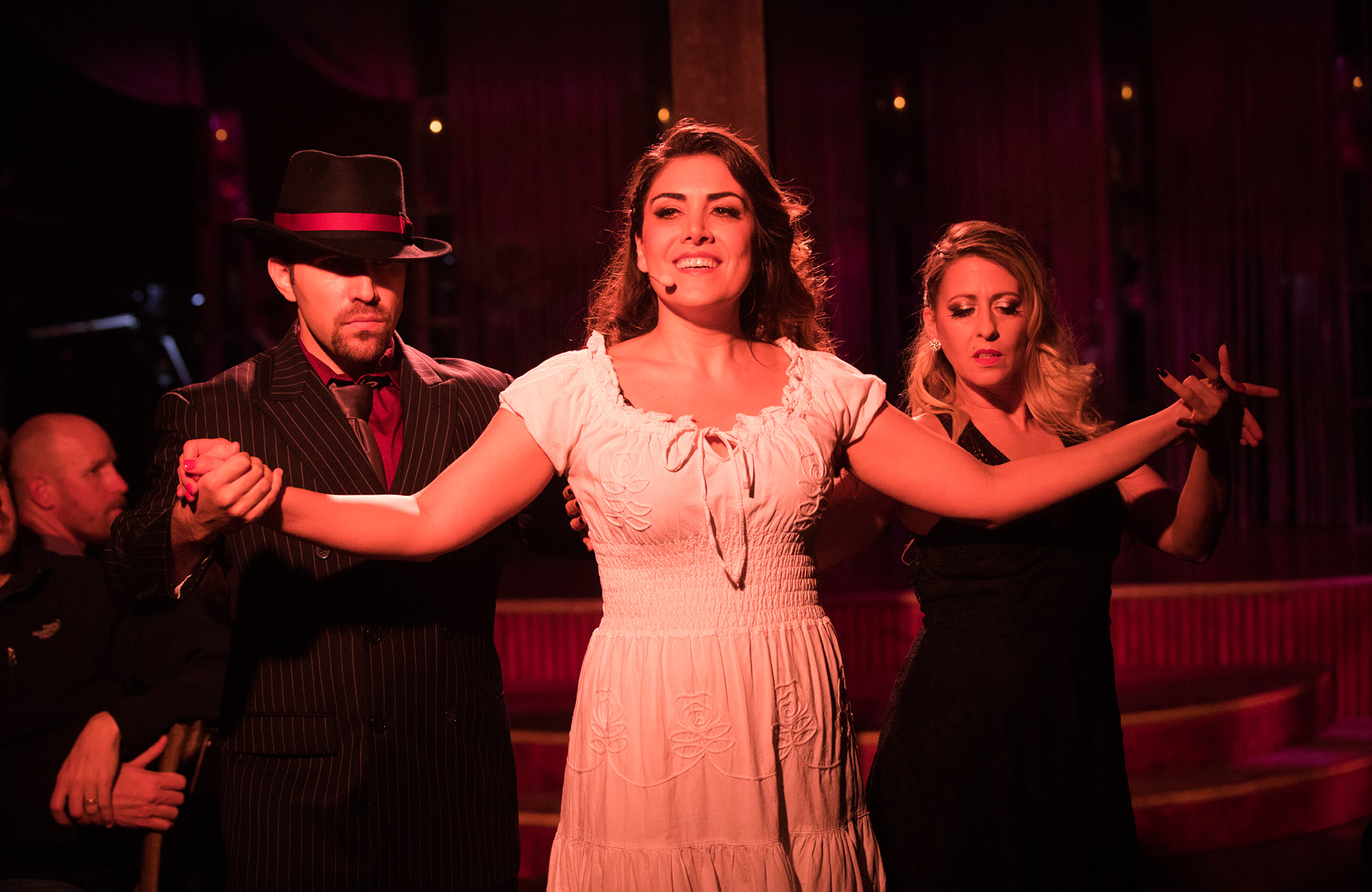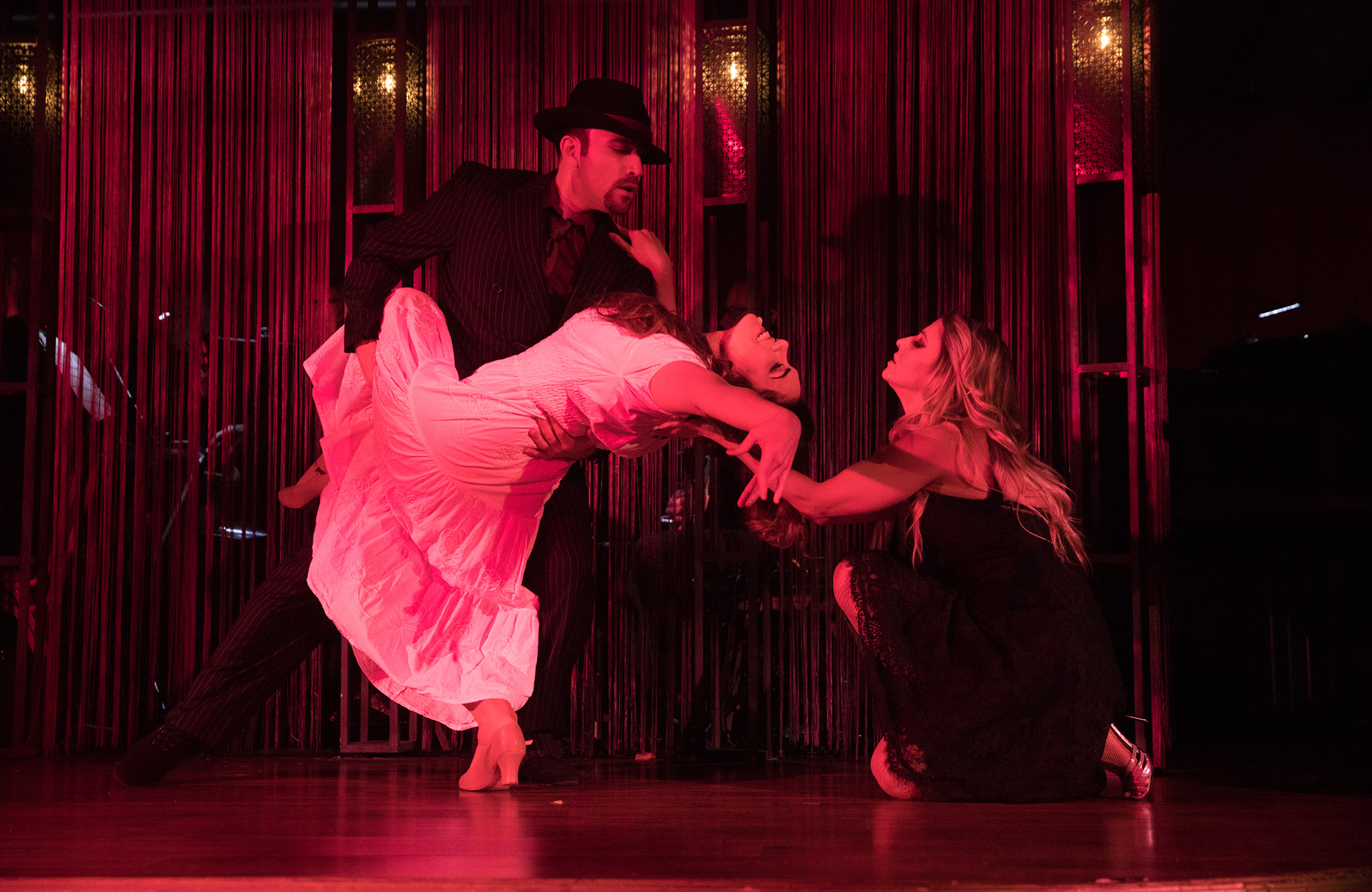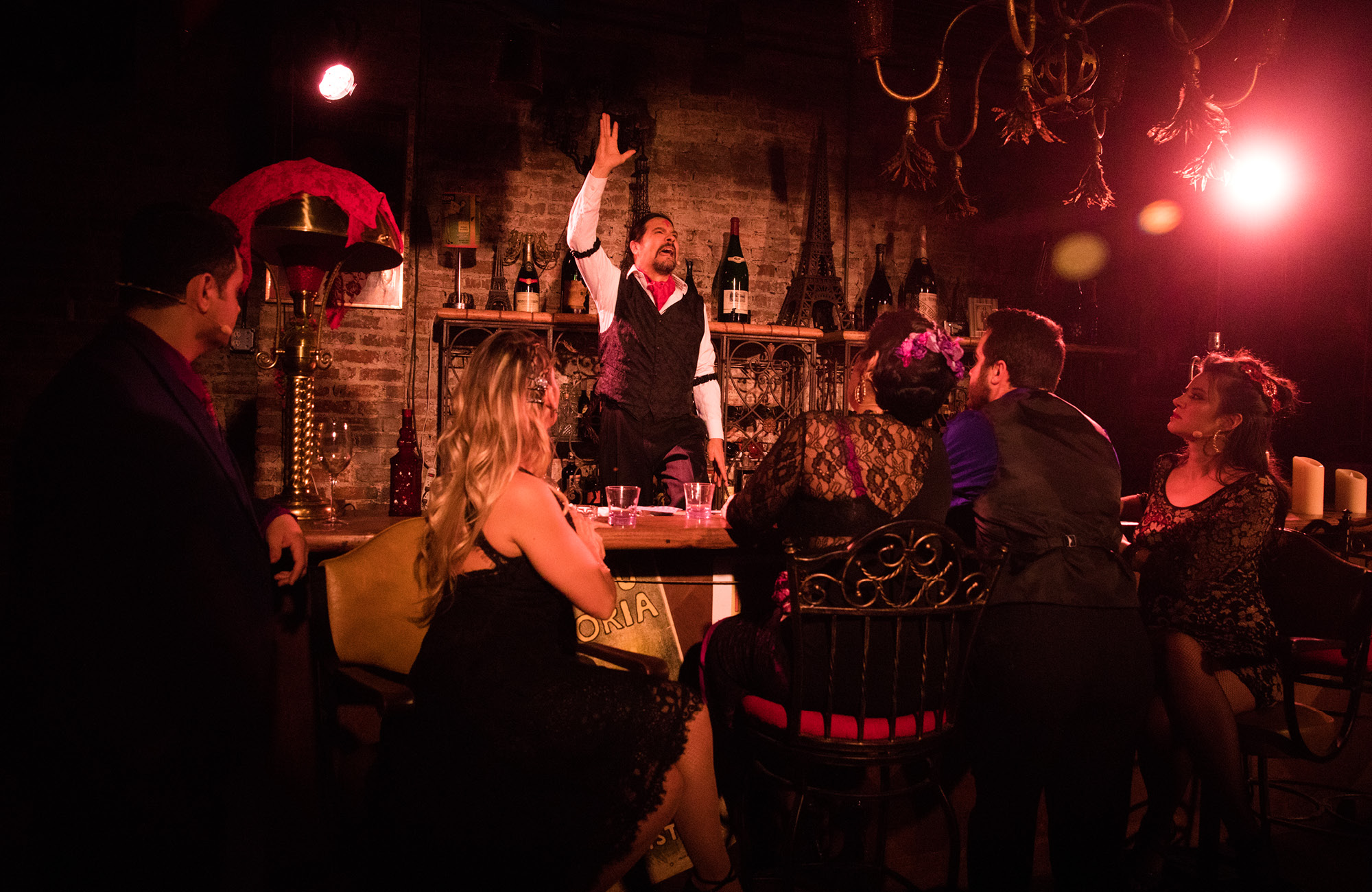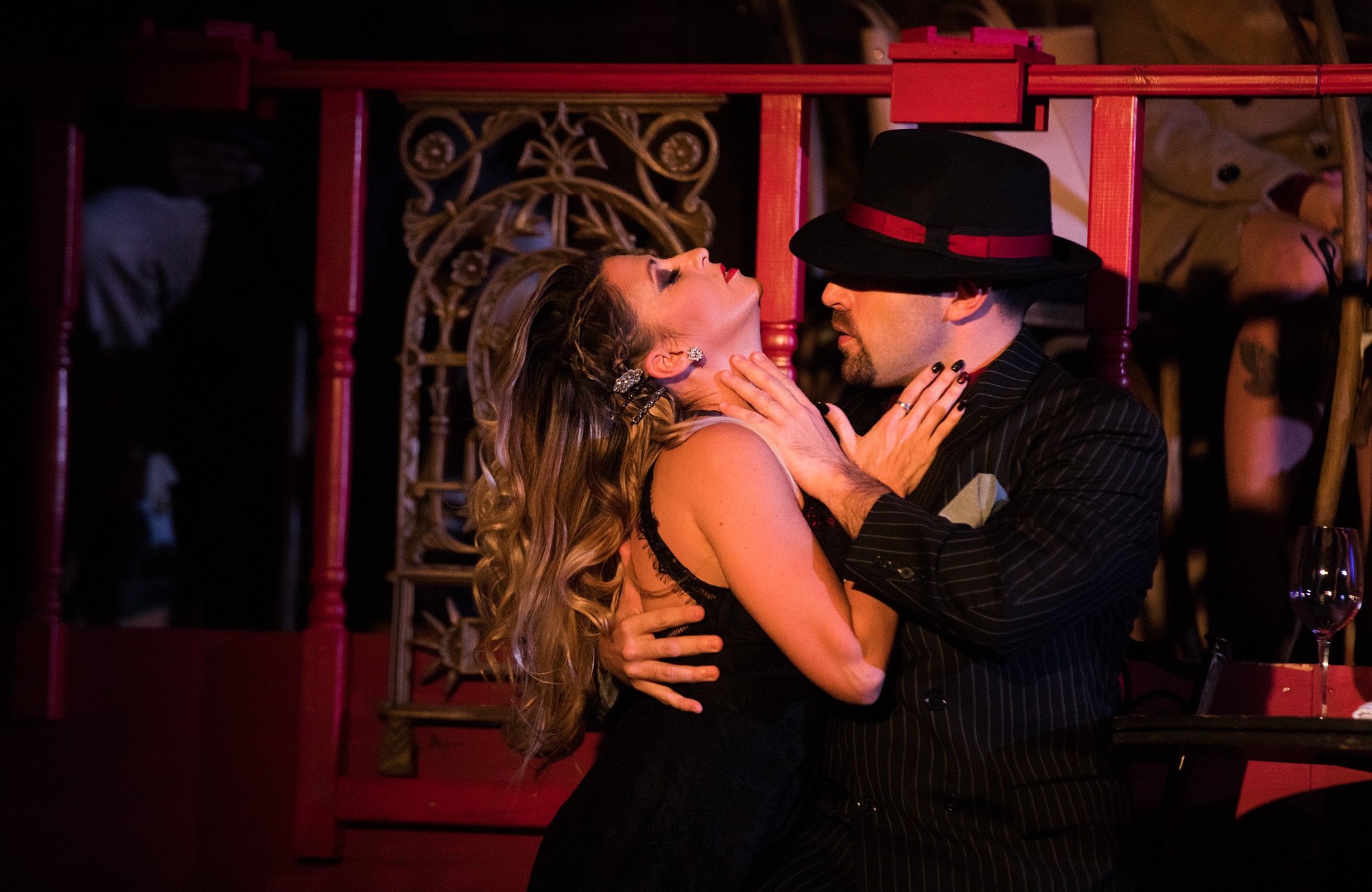Maria de Buenos Aires
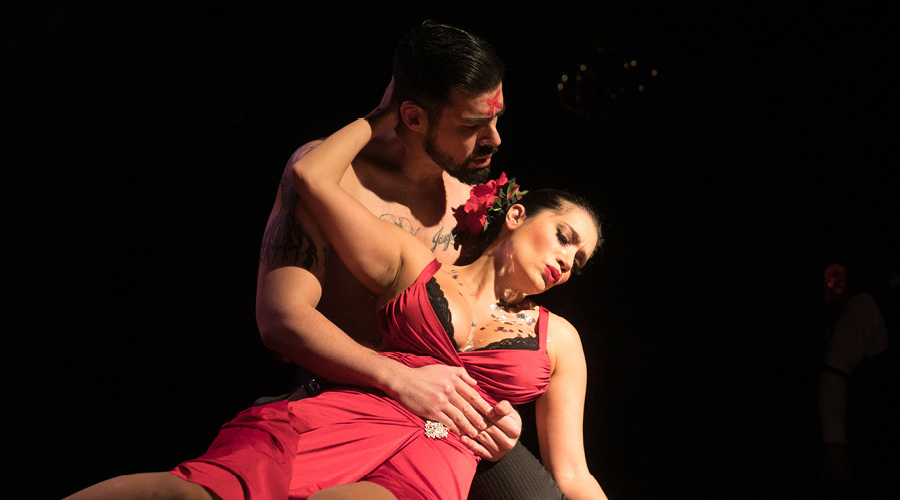
Back by popular demand!
The magic returns this season with an encore performance of Astor Piazzolla’s tango opera Maria de Buenos Aires. This sensual and seductive piece, the story of a tango-obsessed prostitute born on a day “when God was drunk,” will knock you over with its powerful storytelling and singing.
Once again, Le Maison Rouge tranforms into a sensual tango club, putting you in the middle of the story.
Performed in Spanish with English supertitles
Le Maison Rouge at Paris on Ponce
The Discoveries series sponsored by The Molly Blank Fund of the Arthur M. Blank Family Foundation
This production sponsored by Mr. & Mrs. Ronald R. Antinori
Opening Night sponsored by The Mary & Charlie Yates Family Foundation

Get the Feeling
Video by Felipe Barral/IGNI Productions
Photos by Jeff Roffman
Listen to Maria de Buenos Aires
Approximate Running Time:

Synopsis
Composer: Astor Piazzolla
Librettist: Horacio Ferrer
Premiere Date: May 8, 1968
The tale opens on Duende (the Narrator) who relates the story of Maria, a prostitute born in the slums “one day when God was drunk … with a curse in her voice.” Maria is seduced by the rhythms of the tango and soon becomes “the most sorcerous singer and lover” in Buenos Aires.
However, her “fatal passion” arouses the wrath of robbers and brothel madams who shoot her to death, and bury her in an unmarked grave. In death, Maria is pulled into a dreamlike Hell where she encounters the choral circus of psychoanalysts who dissect her to the core.
She makes a resurrection of sorts when the Duende summons her to return as a Shadow, give birth to a new Maria, and haunt the sordid streets of Buenos Aires which she once walked.
Characters & Cast
Maria
The Heroine

Solange Merdinian
Acclaimed Armenian-Argentinean mezzo-soprano Solange Merdinian has garnered an international reputation for her versatility and interpretation as a recitalist and chamber musician, in repertoire ranging from baroque to contemporary.
El Payador
The Narrator
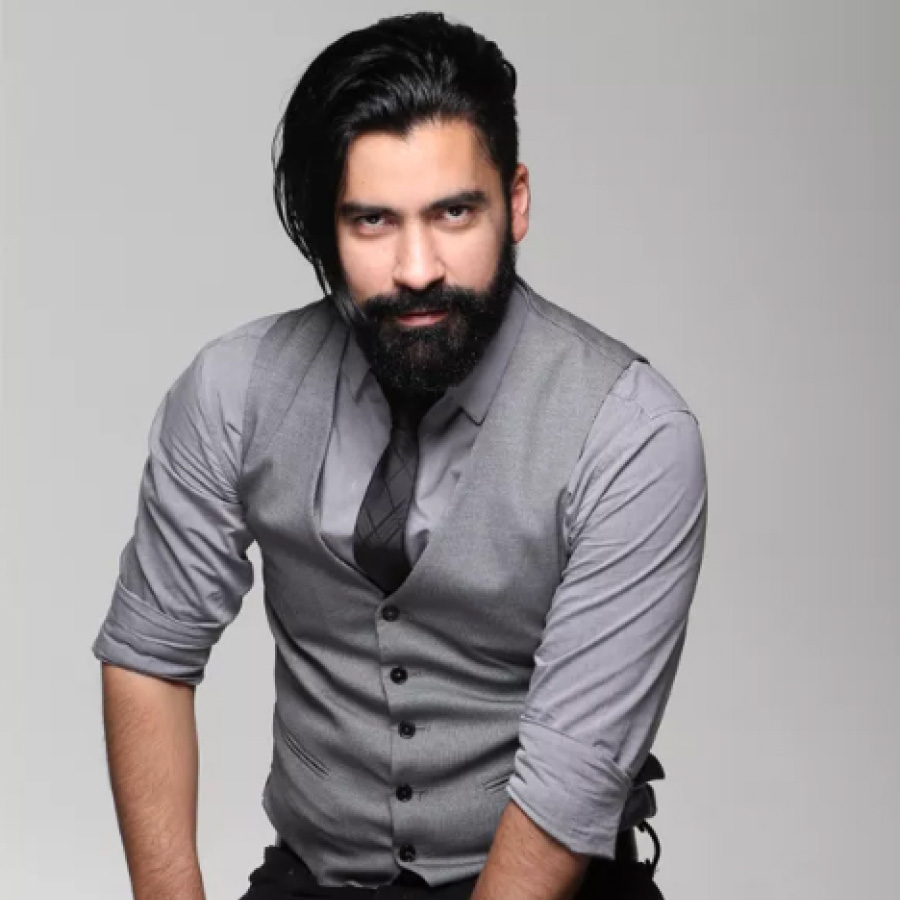
Gustavo Feulien
Hailed by the New York Times as “rich voiced” , Argentinean-American baritone Gustavo Feulien recently sang the role of Scarpia (Tosca) with Maryland Symphony Orchestra and will perform it again with Gulfshore Symphony.
El Duende
The Spirit
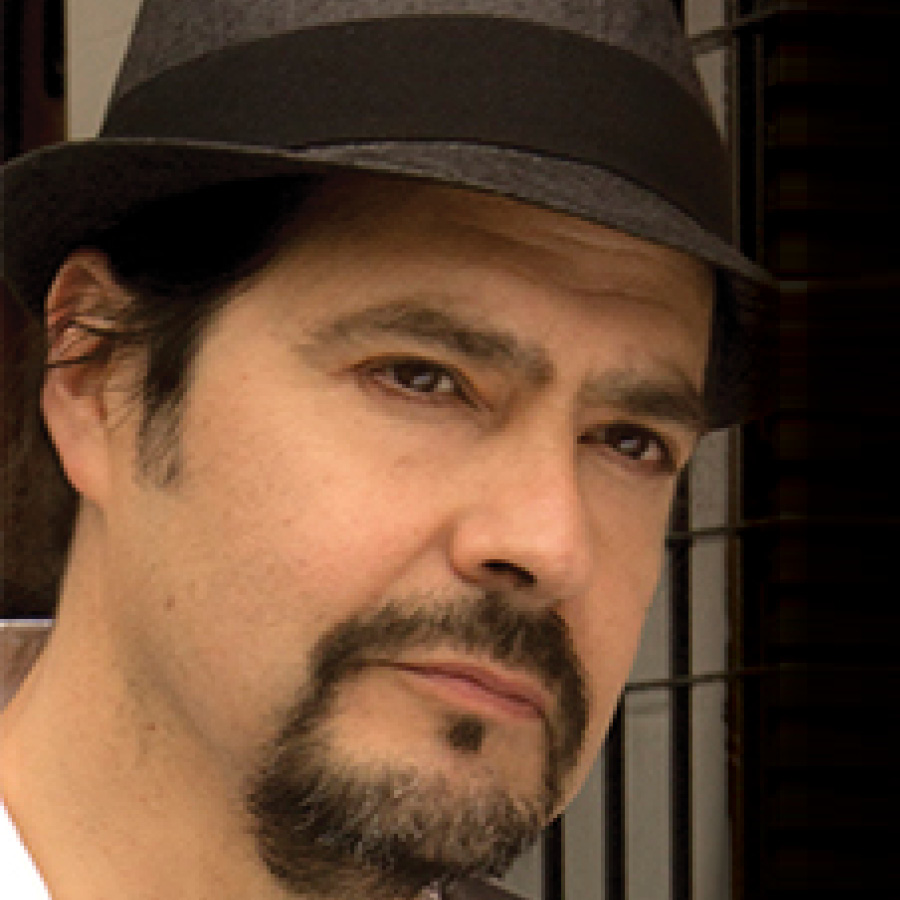
Milton Loayza
Actor, director, and educator Milton Loayza has performed the role of El Duende as several opera companies, including The Atlanta Opera’s first production in 2017.

Sponsored by the Molly Blank Fund of the Arthur M. Blank Family Foundation
The Discoveries series
The Discoveries series is dedicated to audience members who are seeking new works, new ideas and fresh perspectives. These are not your standard operas.
Locations
As part of The Opera’s effort to bring opera to new audiences all over Atlanta, these productions are performed in exciting alternative venues that we don’t traditionally perform opera in.
Supertitles
Many operas are in a foreign language. Supertitles are similar to subtitles in a film, except they are projected above the stage. These translations will help you follow what’s happening on stage.
What to Wear
There is no dress code at The Opera and you will see everything from jeans to evening gowns and formal suits. Most people use it as a chance to enjoy dressing up in their own style.
Arriving in Good Time
If you are late, you will have to sit the first act in the back and then in the intermission ushers will show you to your seat. Plan ahead to arrive with extra time.
Enhance Your Visit
Backstory
Discoveries series performances include events either before or after the performance. As part of the Backstory program, these experiences allow audience members to learn more about the opera, open a conversation around important topics, and participate with the cast in conversation, dancing, and many other formats. Free for ticket holders.
Familiarizing Yourself with the Story
Because of the foreign languages, classical music, and often complex plots, you will very likely enjoy the performance better if you spend a few minutes familiarizing yourself with the story and characters in advance. Some people even like to listen to the music in advance and others prefer to let it wash over them during the show and perhaps look it up afterwards.
Creative Team
Conductor: Jorge Parodi
Production Director: Tomer Zvulun
Associate Production Director: Brian August
Scenic Designer: Christopher S. Dills
Costume Designer: Joanna Schmink
Lighting Designer: Kevin Frazer
Wig & Makeup Designer: Lindsey Ewing
Choreographers/Tango Dancers: Jeremías Fors and Analía Centurión
Composer
Astor Piazzolla
(1921-1992)
Piazzolla was born in Mar del Plata, Argentina, on March 11, 1921. His parents were poor Italian immigrants who moved to New York City in 1924, affording the young Piazzolla extensive exposure to jazz artists like Duke Ellington and Cab Calloway. His father also played tango records by the early masters, especially the legendary vocalist/composer Carlos Gardel, and gave Astor a bandoneon for his ninth birthday. In addition to lessons on that instrument (which encompassed American music, like Gershwin, as well as tango), Piazzolla also studied with classical pianist Bela Wilda in 1933, becoming an ardent fan of Bach and Rachmaninoff. Around the same time, the budding prodigy met and played with Carlos Gardel, appearing as a newspaper boy in Gardel’s watershed tango film El Dia que Me Quieras. The teenaged Piazzolla turned down an offer to tour South America with Gardel in 1935, a fortuitous decision that kept him out of the tragic plane crash that claimed Gardel’s life.
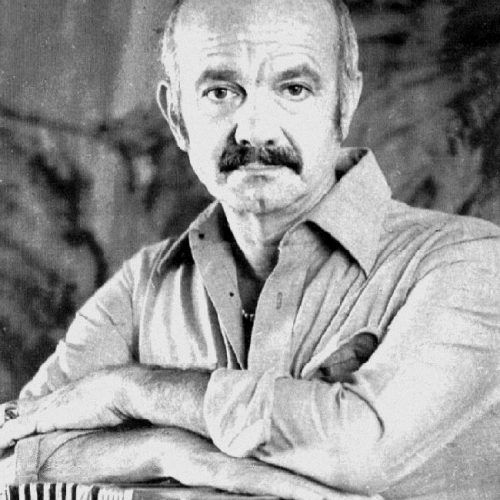
Librettist
Horacio Ferrer
(1933-2014)
Ferrer was born in Montevideo into an educated family, son of Horacio Ferrer Perez, a Professor of History, and Alicia Escurra Francini, who was 11 years older than his father and spoke four languages. He had a close relationship with his brother, Eduardo, to whom he dedicated several of his lyrics.
The family paid frequent visits to his mother’s brother in Buenos Aires, Argentina where Ferrer learnt to play tangos on the guitar by ear. Later his uncle would introduce him to the bohemian nightlife of the city.
He studied architecture and engineering for eight years but never graduated. In the 1950s, when he was in his early 20s, he helped to produce the weekly radio programme Seleccion de Tangos in Montevideo which aimed to promote new developments in tango. Out of the programme grew El Club de la Guardia Nueva which he founded in Buenos Aires in 1954 to organise concerts in Montevideo for those musicians who were helping to revolutionise tango, such as Aníbal Troilo, Horacio Salgán and particularly Astor Piazzolla and his famous Octeto Buenos Aires. Ferrer’s first meeting with Piazzolla in 1955, after Piazzolla returned from France, would prove an important turning point in Ferrer’s life.
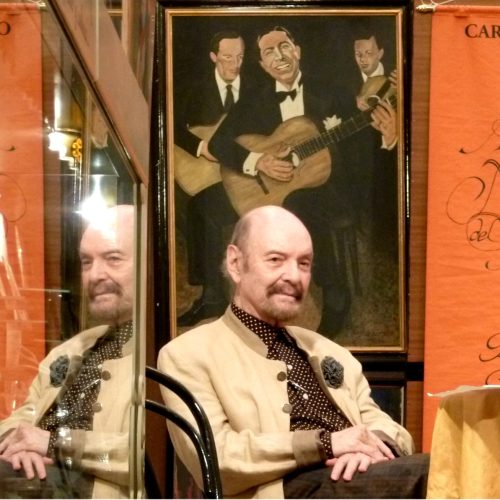
Conductor
Jorge Parodi
Reviewed as having “the most expressive conducting hands since Stokowski’s,” (New York Daily News) Argentinean-born conductor Jorge Parodi has worked as conductor at Buenos Aires Lírica (Argentina), The Banff Centre (Canada), Tsaritsynskaya Opera Volgograd (Russia), Encuentros Internacionales de Opera (Mexico), Hofstra University and New York University among others; and as coach or repetiteur at several prestigious institutions, including the Teatro Colón (Buenos Aires), Opera Tampa, Connecticut Grand Opera, Lake George Opera Festival to name a few. He has collaborated with such artists as Tito Capobianco, Sherrill Milnes, and Rufus Wainwright; and he has assisted conductors of the caliber of Lorin Maazel and Julius Rudel.
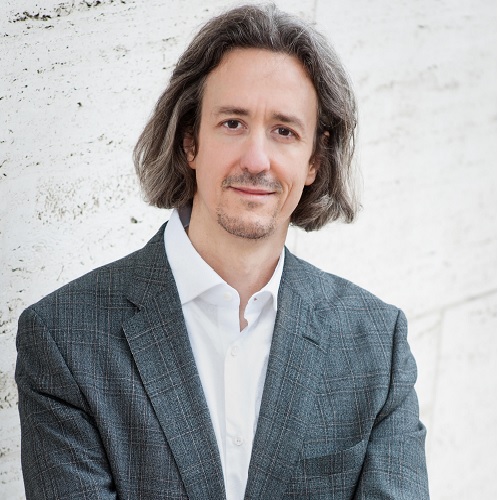
Director
Tomer Zvulun
General and Artistic Director of The Atlanta Opera since 2013, Tomer Zvulun is also one of opera’s most exciting stage directors, earning consistent praise for his creative vision, often described as cinematic and fresh. His work has been presented by prestigious opera houses around the world, including The Metropolitan Opera, the opera companies of Seattle, San Diego, Dallas, Boston, Cleveland, Cincinnati, Pittsburgh, Buenos Aires, Wexford, New Orleans, Minnesota and Wolf Trap, as well as leading educational institutes and universities such as The Juilliard School, Indiana University, Boston University, and IVAI in Tel Aviv. His debut in New York was in a new production of L’heure espagnole and Gianni Schicchi at Juilliard Opera Center that was praised by The New York Times for its “witty, fast-paced staging and the director’s Felliniesque style.”


